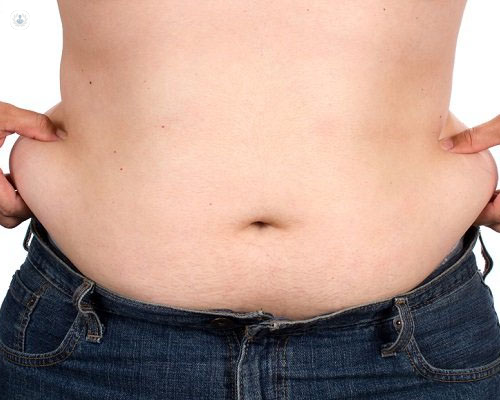Cirugía de la obesidad: ¿Cuáles son las técnicas?
Written by:Obesity is defined as a chronic disease characterized by a chronic positive energy balance and is manifested by an excess of weight and body fat. Suffering from this disease can lead to serious consequences for the body such as the onset of diabetes, hypertension, cardiovascular complications and even with the manifestation of some types of cancer related to the digestive system.
In order to assess the degree of obesity, the Body Mass Index (BMI) is calculated by dividing the weight by Kg / height in meters squared. Its formula is: BMI = Weight in Kg / (Size in ms) ².
Therapeutic Approach to Obesity
The goal of treatment through diet, exercise, behavioral changes or drugs is to obtain sufficient weight loss to avoid diseases associated with obesity and to maintain it over time.
This conventional treatment is indicated in the majority of obese patients. However, there is a group of morbidly obese people in whom this form of treatment often fails and who are candidates for some bariatric surgery procedure. The failure of standard medical treatment has, in these cases, an index of 98%.
Who Should Undergo Bariatric Surgery?
Surgery is only indicated for morbidly obese patients, ie those with BMI> 40 kg / m2 or BMI> 35 kg / m2 with other major factors such as hypertension, high cholesterol (dyslipidemia), type 2 diabetes mellitus , Sleep apnea syndrome, severe osteoarthrosis in loading joints and cardiovascular diseases. On the other hand, other minor circumstances may also occur in patients between 15 and 65 years old, such as varicose veins, cholelithiasis or stones in the gallbladder, depression, stress incontinence, gastroesophageal reflux or cranial hypertension.
Minor degrees of obesity associated with type II diabetes are now included as a form of definitive treatment after achieving adequate weight loss.

Bariatric Surgery Techniques
In general, there are three types of surgical techniques of obesity:
- Restrictive bariatric surgery : It is limited only to the level of the stomach, that is, to the food that is ingested.
- Malabsorptive Bariatric Surgery : Reduces the absorption of nutrients at the level of the small intestine.
- Mixed bariatric surgery : Combining procedures of restriction and malabsorption.
Bariatric surgery has changed dramatically in recent years. The Roux-en-Y shunt is the standard to be followed for all other techniques. Gastric banding methods have been replaced by vertical tubular gastrectomy, which is currently the most commonly used technique by almost all bariatric surgery groups, and malabsorptive techniques appropriate for cases of superobesity.
Restrictive Techniques of Obesity Surgery
During restrictive procedures, a small reserve is created in the upper part of the stomach through various techniques. One of the most used is the gastric band (BG) with its variants: adjustable (BGA) and adjustable laparoscopic (BGAL). It acts as a belt around the stomach, so it reduces its capacity by creating a small new stomach, usually 30 cc. This causes a state of precocious satiety with minimal amounts of food. The weight loss is obtained by reducing the amount of food ingested, so that the body takes part of the energy required for metabolism and protein synthesis of the fat reserves of the individual.
Its drawbacks are the inability to eat in patients accustomed to eating a lot, daily vomiting and switching to a high calorie liquid diet with which obesity reappears after an initial period of weight loss.
The Mixed Techniques of Obesity Surgery
Among the mixed techniques is Biliopancreatic Fun (DBP) represented mainly by Scopinaro, its variants, Cruce or Sweet Duodenal and Gastric Bypass. In the latter case, a small upper gastric reservoir is created which joins the Roux-en-Y small intestine, excluding the rest of the stomach.
In DBP and Swett or Dodenal Crossing a partial excision of the esetómago is practiced to reduce its capacity and the intestine is separated in two parts, to the way of Roux. This division has two functions: a handle ascended to the stomach (A) that carries food, another from the duodenum that carries the digestive juices (biliopancreatic handle). Both converge at different distances from the ileocecal valve to form the common loop or channel (C).
This type of techniques of greater complexity obtains losses of weight superior to the rest of techniques, but they have as disadvantages a greater mortality 1 - 3% with respect to the vertical gastrectomy 0.3% and greater morbidity in the immediate postoperative as of the one of a long term.
Vertical gastrectomy and gastric tube
It is the technique most recommended by specialists in General Surgery because of its ease, the lower mortality and absence of sequelae. The postoperative comfort and the results in the medium term explain the enthusiasm for this technique easy to teach and reproducible with good results in 90% of the cases. It is indicated in patients with morbid obesity BMI> 40 or 35 who suffer from other pathologies and after the failure of other controlled treatments.
It needs a preoperative evaluation similar to the other procedures and a gastroscopy with helicobacter test. If this is positive, it should be treated prior to surgery.
The gastric tube has been shown to be the best restrictive technique thanks to the decrease in the production of ghrelin. This is a hormone that regulates the sensation of hunger and, with it, the food intake. It is performed by laparoscopy through five ports and a vertical gastretomía, method of opening a hole in the anterior wall of the abdomen.
On the second postoperative day, the liquid diet starts and the third one is discharged, after confirming a good tolerance to this type of diet. Keeping the passage of food through the duodenum does not require administration of mineral or vitamin supplements, it is sufficient with a control of the dietitian to maintain a balanced diet.
As an inconvenience, the patient may have a degree of gastroesophageal reflux that is controlled with gastric antisecretor and, later, spontaneously by the body itself when losing weight. Another possible complication is the appearance of bleeding and a postoperative fistula.
It allows a sufficient, lasting weight loss and an improvement of the associated pathologies. In addition to the resolution of type 2 diabetes in 85% a year of the intervention, as well as the control of hypertension, cholesterol (dyslipidemia) and other pathologies derived from obesity.



